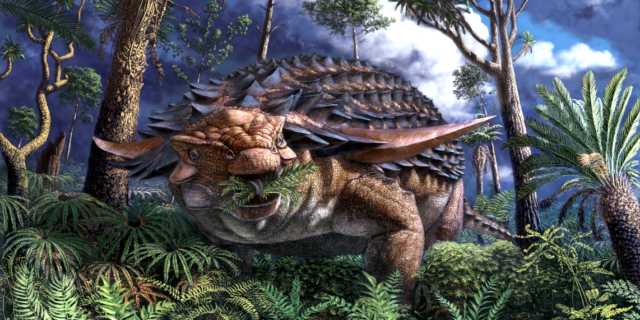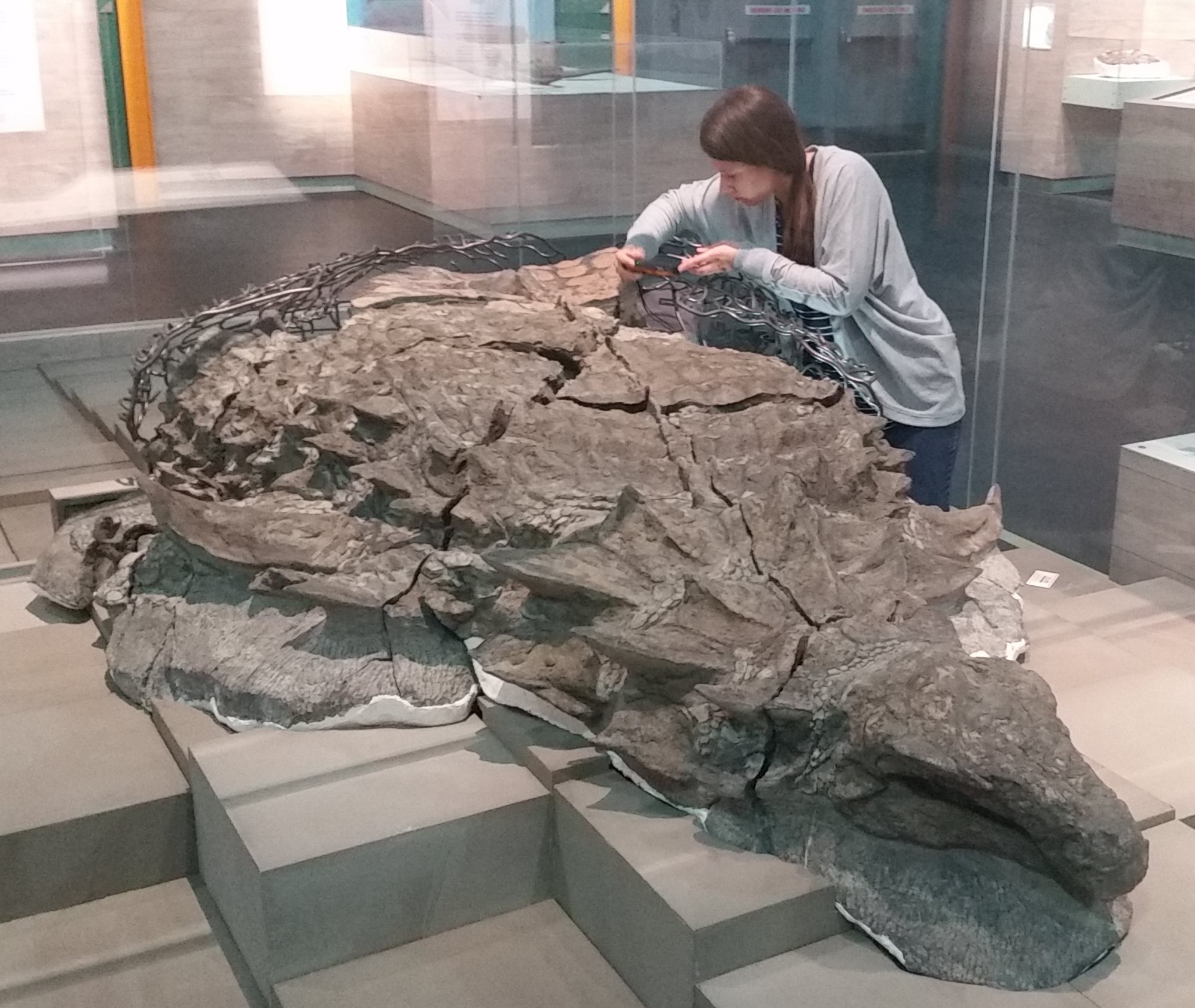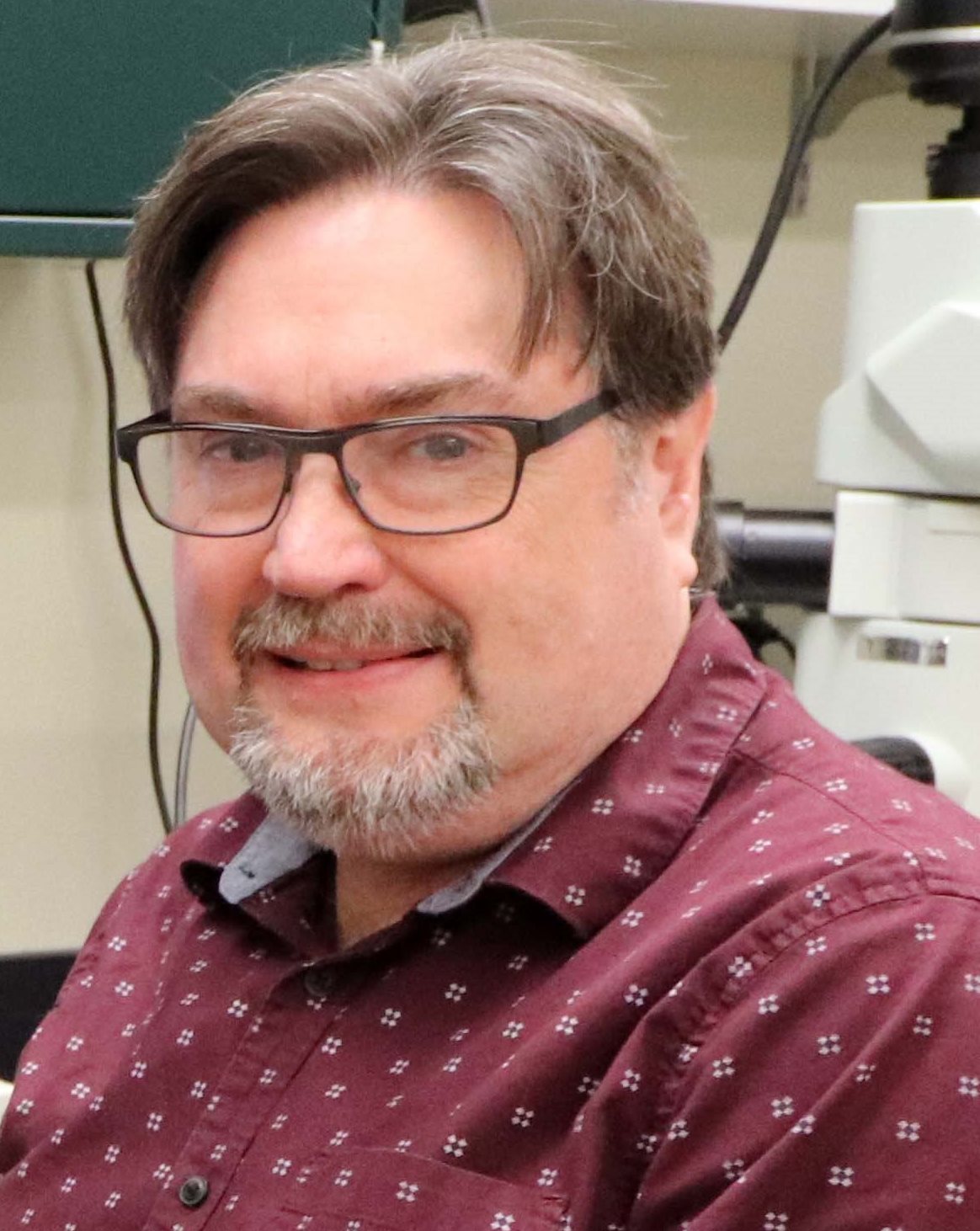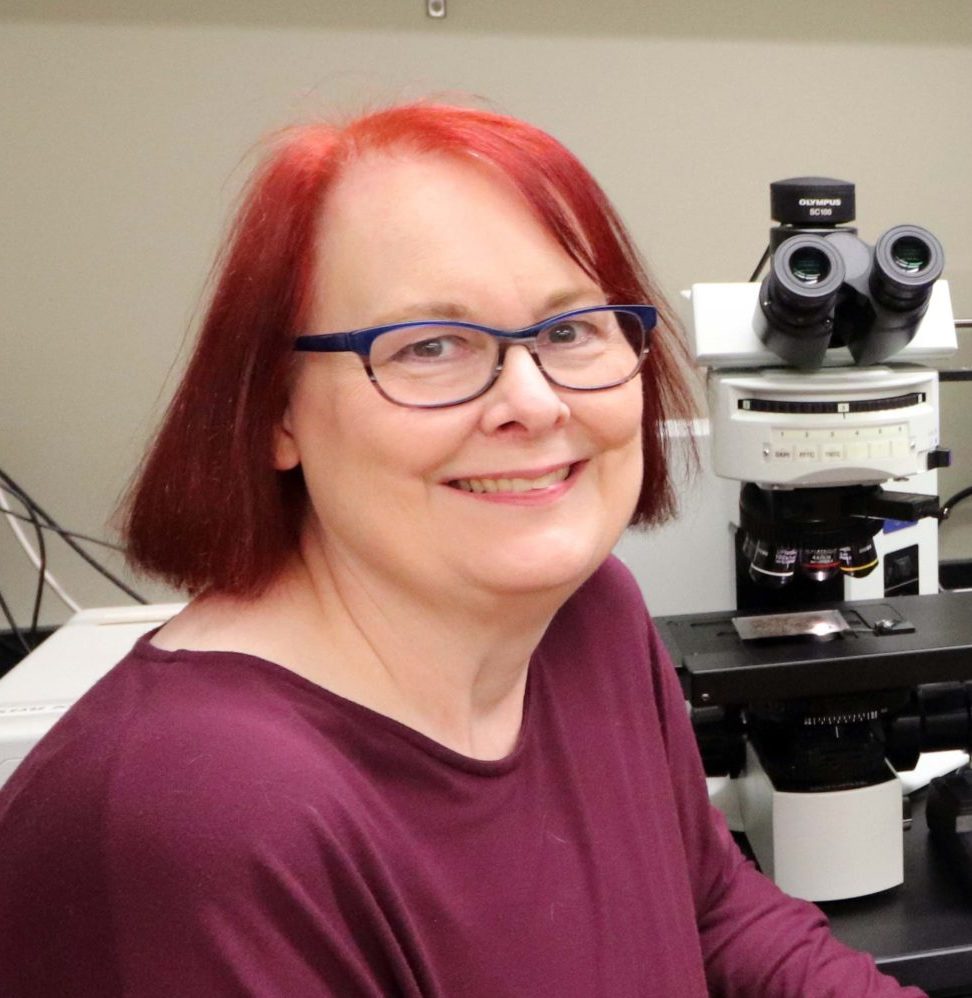
By
Jessica Kalyniuk, David Greenwood, and Cathy Greenwood
September 2020
Print Version
What you need to know
Previous work on herbivorous dinosaur diet relied heavily on indirect evidence, such as dinosaur body size, feeding height, plant availability, jaw musculature, and tooth morphology. The lack of direct evidence is due to the rarity of much more than skeletons preserved in the fossil record. Direct evidence of diet includes stomach contents and feces, both of which typically don’t preserve. Bones and other hard parts have a much greater chance of preservation and therefore are what is typically found and used by paleontologists to reconstruct the appearance, lifestyle, and diet of a dinosaur.
Why this research is important
Most of what we know about what dinosaurs ate is based on indirect evidence from their skeletons. In 2011, a new species of nodosaur (an herbivorous armored dinosaur) was uncovered at the Suncor Millennium Mine near Fort McMurray in Alberta. This nodosaur, Borealopelta markmitchelli, is widely regarded as the best-preserved armored dinosaur in the world. This nodosaur lived and died 110 million years ago in the Early Cretaceous epoch. Its rapid burial by marine sediments shortly after death preserved details about skin coloring and its keratin armor, but also about its diet!
How this research was conducted
Thin layers of the stomach contents were cut, polished, and mounted on microscope slides. These slides displayed a bounty of Cretaceous fragments of leaves and other microscopic plant parts, most of which preserved cellular-level detail. In addition to the plant fragments were abundant gastroliths (small stones in the gut to aid with mechanical digestion). The plant fragments were photographed and then sorted into plant groups using diagnostic features. For example, leptosporangiate ferns have a sporangium with a distinct annulus that helps disperse spores. These sporangia were easily identified in the stomach contents, many of which were preserved intact as if they were picked off a fern yesterday, not 110 million years ago. Additionally, conifers and cycads can be identified from the characteristic polygonal guard cells of their stomata (leaf pores). To understand what plants were available for food in this nodosaur’s environment, the Gates Formation of Alberta was studied. This rock formation preserved fossil leaves of a wide range of ancient plants, as well as nodosaur trackways, and is the same age and geographical location as Borealopelta.
What he researchers found
We found that this dinosaur had a favorite food–ferns! Although many plant groups, such as conifers, cycads and extinct relatives, Ginkgo, and now extinct plants were available in its environment, the majority of the stomach contents (85%) was fern leaf pieces and sporangia. There were rare cycad leaf pieces (3%) and trace amounts of conifers. These data represent selective feeding where Borealopelta markmitchelli was choosing to eat ferns over other plants growing in the same area. Furthermore, 6% of the total plant tissue was charcoal. This shows that Borealopelta was feeding in an area that had recently experienced a forest fire. In present-day forests, ferns can be the first plants to re-appear after a fire, so this charcoal was likely accidentally eaten while Borealopelta was snacking on ferns. The selective feeding on ferns in a recently burnt area tells us that Borealopelta preferred some local environments over others. Our data also places its season of death as late spring to early summer as (1) ferns typically produce sporangia then, and ripe fern sporangia were found in its stomach contents; and (2) a twig was found that showed mid-growth in its outermost growth ring, consistent with the twig being eaten mid-summer.
How this research can be used
This study provided the first direct evidence of an herbivorous dinosaur diet, and so allows paleontologists to better understand how these animals lived.
Acknowledgements
Funding and grants were provided by the Royal Tyrrell Museum Cooperating Society and the Paleontological Society (USA), the Canada Foundation for Innovation and Research Manitoba, NSERC (Discovery grant), NSERC CGS-M (scholarship), University of Saskatchewan, Suncor Canada, and the National Geographic Society.
About the Researchers
Keywords
- diet
- dinosaurs
- fossils
- nodosaur
- paleontology
Publications Based on the Research
Brown, C. M., Greenwood, D. R., Kalyniuk, J. E., Braman, D. R., Henderson, D. M., Greenwood, C. L., & Basinger, J. F. (2020). Dietary palaeoecology of an Early Cretaceous armoured dinosaur (Ornithischia; Nodosauridae) based on floral analysis of stomach contents. Royal Society Open Science, 7(6), 200305. doi:10.1098/rsos.200305
Editor: Christiane Ramsey
Read more BU Research
Research at Brandon University follows comprehensive policies designed to safeguard ethics, to ensure academic integrity, to protect human and animal welfare and to prevent conflicts of interest.



